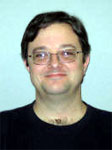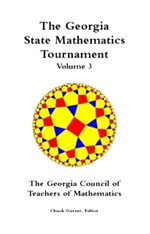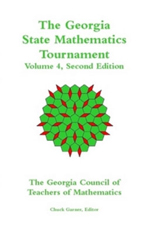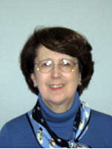 |
Vol VIII No. 4 Winter |
||||||||||||||||||||||||||||||||||||||||||||||
|
It is difficult to believe that the 2016-2017 school year is to its midpoint already. The newness has worn off; the Fall season and all of its holidays and celebrations are coming to a close. Now is the time we begin to focus on the events that lie ahead – cold weather, testing season, Spring Break, and plans for the next school year. As I reflect on the year so far, I recall new beginnings, accomplished goals, lessons learned, relationships built, and plans made. It is very easy to get lost along the way with all of these activities going on.
Using Start with Why as a book study, North Georgia RESA has been “rebranding” and redefining our purpose and vision as an organization. Our focus is on “Excellence in Educational Support.” The staff has discovered that our goals and activities must be centered on our beliefs and our WHY. Individually, we are examining what our work should look like and ensure that we stay in alignment with our focus.
This goal cannot be accomplished in one day or by one individual. All of us are better than one of us. We need all of our membership to work together - each of us doing our part. I encourage each of you to ponder on what your role is and how we can continue to give each of our students more positive experiences in mathematics education.
Other Awards
There really is no consensus today about the purpose of education. Do we want students to be independent thinkers, creative problem solvers, successful business people, reliable hourly workers, confident and happy people, capable leaders, cooperative team members, good citizens, people who persevere in spite of difficulties, etc.? The answer to that question is, of course, that all of those are desirable, but a single individual is unlikely to achieve all of them.
Most of us agree that education should empower students. But there is a fundamental disagreement about what empowerment means. Some believe that everyone should be given the same tools so that everyone receives the same opportunity for success. Others argue that the curriculum should be differentiated so that each student focuses on what he or she is most likely to use. Good arguments can be made for either position. How It Should Be Taught Cooperative groups, direct instruction, problem-based learning, lesson study, Montessori Method, brain-based learning, drill and practice, and Visible Learning are just a few current approaches to education, and there are many others as well. There is considerable overlap among many of the approaches, but it is clear that some are more effective than others for achieving particular outcomes. How we should teach, then, depends on what we want to achieve. How We Can Know If It’s Been Taught According to a popular aphorism, not everything that can be counted counts, and not everything that counts can be counted. Most of us in education recognize that standardized testing does not tell us everything that matters about student achievement or teacher effectiveness. And conversely, not everything that is tested is an important indicator of student achievement or teacher effectiveness. Perseverance, creativity, cooperation, leadership, and dependability are just a few important areas not addressed by testing programs. A good assessment program should include both formative and summative assessment achieved through a variety of methods, and ideally should include narrative evaluation as well as scores. That is not easy or cheap, and does not lend itself to the comparison between groups or individuals that is so important to political leaders today. Why We Teach So why would any sane person today want to make a career in a field without clear goals, procedures, or evaluation methods? Do we do it for the money, or maybe the recognition and respect of the community? Or maybe because it’s easy? Not likely. Most of us who make careers as educators do it because we care about our students! We want to give them the tools they need as they struggle to understand. We enjoy watching the aha moments when they make connections, and we watch as that understanding dawns in them. Finally, we want to empower each of them to be successful, believing that they are the ones to define success according to their individual goals, understandings, values, and intellects. We are their mentors and their advocates, and the satisfaction that comes from that makes it all worthwhile.
For some reason, those of us who can do math rarely see the value we hold. My officers didn’t realize that we hold a marketable skill – math. We planned and executed three different events: September Math Camp, Elementary MathFest (a tournament for 4th and 5th graders), and Summer Math Camp. Between the three events, we now raise enough money each year to travel overnight to three different tournaments. The trips we chose for this school year were HMMT, Georgia Southwestern Tournament, and Columbia University’s math tournament. The HMMT is not like our usual tournaments. First, there is the actual trip. We fly to the tournament, stay in a hotel... so we eat, sleep, and live together for three days. The trip is a real bonding experience. We can only take 12 students with us, so being selected to attend the tournament is a real honor and a great responsibility.
Third, the tournament weekend includes the Friday Night Mini Events. Each student can choose to participate in one of the games created by the corporate sponsors of the tournament. This is the students’ first look at their competitors and lots of prizes are awarded. They have a lot of fun at this event, and they get a free pizza dinner, too.
We have experienced a real revitalization of math team since we have incorporated these new-to-us tournaments. We went from 20 math team members to 60 members. Most importantly, the students have become more committed to our practices, formed a more cohesive team, and have a much clearer focus on problem-solving. For more information about the tournaments mentioned here, check out the following resources.
Using this resource with a second-grade class, my class and I worked on the lesson together. (See the resource list for a link to all the lesson plans I used.) I used a free lesson by Dan Gallagher titled Graphing: Create Graph & Interpret Data. The lessons took three days in the classroom to complete. Every student had an iPad to complete his or her work, and I used the SmartBoard to show the lesson. I also logged into the lesson with an iPad as a student so that I could view the lesson as the students saw it. We focused on the following essential questions:
The lesson began with presenting the learning targets to the students and reviewing data and types of graphs. The class took a poll and gathered information to create graphs. The students were so excited to get to use the iPads to create their graphs, take polls, gather data as a class, and even to answer questions about the data presented in graphs. Students need opportunities to gather data and create graphs before being asked to interpret data on a graph. This lesson gives them the opportunity to do both. After the students chose their favorite flavor of ice cream, the data collected was immediately displayed on the board for the students to use the information to create a graph on their iPads. When the students submitted their work, it was displayed on the board for everyone to see. The class could immediately discuss the graphs and address any of their misconceptions about the results. Here is an example of my students’ work within Nearpod.
This information could be used immediately to help me make decisions about my instruction. After working with bar graphs, we collected more information and created pictographs.
Some of my students were more creative and learned how to change the color of their “text” while others used innovative ways to squeeze the data into the space provided when they ran out of room for their triangles. This gave us the opportunity to discuss the importance of keeping our work neat and organized. Another poll or survey taken during the lesson was their favorite season.
The student data from the survey was immediately recorded and displayed on the SmartBoard as they submitted their responses. I could see which students had or had not submitted their answers in real time.
The lesson also contained pre-created quizzes for the students to take and for me to gather information about what they had learned or what they understood. With this information, I could immediately see which students still needed work and which ones were already successful.
Additional resources, such as links to an outside websites that had an interactive lesson on graphing, were also provided in the lesson. For example, one link took the class to the “Jellybean Tree” activity where students had to move the jellybeans from the tree to the correct color on the chart.
A bar graph was immediately created with the data. The students loved this activity. This site also had questions about the data that they had just collected, and the students answered these questions by using the graphs they had just created. Nearpod turned out to be a very useful resource for my second graders. Through this lesson, my students collected data and used graphs to organize the data and to answer questions. As with all lessons, there are things that I would change. For example, I would download the Nearpod app onto the iPads instead of asking second graders to type in the web address. The app is more user-friendly in that all the students have to do is use the pin number and log into the site. The pin number takes them directly to the lesson that I want them to complete. Additionally, I would teach some basic iPad skills to my students before beginning the lesson. I found that students would inadvertently open a new webpage by tapping on the tab at the top of the page. However, all of these are easy fixes to relatively small problems with implementing the lesson. Overall, I enjoyed the lesson and would recommend it to other teachers. The students remained engaged for way longer than they normally would, and they were enthralled with every new change or slide. The data the students collected related to real scenarios to which they could relate and they recognized how it was applicable to them. The students impressed me with their ability to use technology. They gathered data, created graphs (bar graphs and pictographs), and answered questions about the data. For me, it was easy to collect student work or evidence of learning. I was able to assess their knowledge immediately and address misunderstandings or move forward with the lesson as needed. With such easy data collection and samples of student work right there on my computer, it was easy to differentiate the current lesson and the next day’s lesson for struggling or accelerated students. With this program, the teacher can turn off the student names and display the class data collection and work samples immediately. I love the fact that I could even stop and talk about individual work samples, mistakes, good ideas, and even challenges within the work seamlessly as students needed the differentiation. The lesson is a definite repeat! Resources for this article: Nearpod Download a PDF of this Article
Building Professional Learning and Collaboration within Response to Intervention Good instruction flourishes when teachers collaborate. Students benefit academically when their teachers share ideas, cooperate in activities, and assist one another’s intellectual growth. Building professional and collegial conversations that focus on enhancing multi-tiered lessons set a cornerstone for continuous improvement. The following article details the key components necessary for continued professional learning and collaboration among multiple educators within the Response to Intervention (RtI) framework, a multi-tiered support system. Building Professional Learning and Collaboration within RTI Teacher’s Voice “Ms. Kirby, can you add these meetings to your calendar please?” Sounds familiar doesn’t it? I am already involved in weekly meetings including those with the principal, grade level team, parents, and the school district. During the grade level planning meetings we discuss how to collect multiple types of assessment data from different students. Here my colleagues and I voice student concerns, curricular needs, and ways to improve students’ mathematical performance. I must attend school improvement committee meetings and RTI team meetings and mandated lesson study sessions to improve student achievement. During lesson study each grade level team must work to develop a set of procedures based upon the school district guidance. I am committed to improving my students learning. I want to make a difference, and I want to learn, but where will I find the time to develop and implement one more thing in the current schedule? How can I learn and implement all the new information to make a difference in my students? How can I connect to other colleagues as part of an ongoing learning community? Even though adding more to my schedule was a bit overwhelming, I quickly discovered that team meetings provided support and helped me throughout the school year. The professional learning and collaboration proved to be an invaluable connection within the RtI in mathematics process.” Response to Intervention (RtI) is a multi-tiered support system designed for improving instruction and providing academic and social-behavioral support to all students. It should be implemented to ensure success for every student in every classroom. RtI is a systematic method of identifying, defining, and resolving students’ academic and social-behavior difficulties using school-wide, problem solving approaches (Gresham & Little, 2013). A key component necessary for implementing RtI is continued professional learning and collaboration among multiple educators (Fuchs & Fuchs, 2005). Good instruction flourishes when teachers collaborate, and students’ benefit academically when their teachers share ideas, cooperate in activities, and assist one another’s intellectual growth (U.S. Department of Education, 2010). Building professional and collegial conversations centered on enhancing our multi-tiered lessons sets a cornerstone for continuous improvement (AuthorGresham & Little, 2012). Specific strategies for school reform and renewal based on continuous learning serve as the catalyst for maximizing the potential for student improvement in mathematics within Response to Intervention. RtI requires professionals that are highly knowledgeable in evidence-based instructional practices, as well as intervention materials, multiple types of assessments, and data collection methods. In addition to content expertise, we must also possess skills in differentiating and intensifying instruction, data interpretation, problem solving, and collaboration (Fuchs & Fuchs, 2005). As we continuously learn, our students continuously improve as student improvement and achievement are linked in our learning as professionals (Gresham & Little, 2013). Implementing RtI within districts, schools, and classrooms requires comprehensive support for students through our collaboration with colleagues. Successful implementation requires coordination and communication to ensure that a clear vision is articulated, sufficient resources are dedicated, necessary skills are supported, and incentives are identified within a clear action plan. No two schools are ever identical in staff, curriculum organization, teacher involvement, requirements, students, and so on. School change is a complex process that requires the active involvement of everyone through explicit and thoughtful coordination of activities and procedures. This can be difficult to do, because we are often asked or required to do more with less. As Ms. Kirby mentioned when describing her school, the meetings and responsibilities continue to be added. Sometimes there seems to be too much to do each day. However, if we look at the purpose of the activity, we can align and meet the goal by enhancing something we are already doing within our school. Most schools are already participating in school improvement processes that include many tasks for everyone in the school. Therefore the questions remain, how does RtI fit with the other professional learning and responsibilities already in place at your school? What is currently in place in your school to support professional learning and RtI implementation? Where do we find the time to collaborate with other educators? Dr. Gina Gresham is an Associate Professor in Mathematics Education, Educational Psychologist, and Behavioral Specialist at the University of Central Florida in Orlando and a national consultant on Response to Intervention in Mathematics. She specializes in the psychology of mathematics including mathematics anxiety, Response to Intervention, research with both pre- and in- service teachers, and teacher self-efficacy. She is a former professor at the University of West Georgia and a Ph.D. graduate and graduate fellow from the University of Alabama.
I love mathematical holidays. Any reason to celebrate numbers with food, fun, and activities somehow livens the spirits of the students and breaks up the monotony of classroom routines. During the spring semester, the no-brainer holiday is, of course, Pi Day on March 14th. However, each year I have felt that the students in my Fall semester classes deserve something as well. What math day could we celebrate during the months between August to December? So, this year, my Accelerated Geometry B Algebra II students chose to celebrate Turk-e Day. That’s right. On the Friday before Thanksgiving Break, my kiddos were excited to share with their classmates what they learned about the transcendental number e, Euler, and applications of this very interesting irrational number. My students created poems, artwork, and fact sheets about this number, and the date fell perfectly into the curriculum as we just finished up a unit on logarithms and exponential functions.
How have you celebrated mathematics with your students? Do you have any mathematical student artwork to share? I’d love to hear from you. Please email your stories or student artwork to gammillgctm@gmail.com to share what is happening in your classroom.
Abstract
Achievement gaps exist between many different subgroups for a myriad of reasons. The most widely studied achievement gaps are those between minority students and their majority peers, as well as those between percentile groups within a school’s population (Porter, 2005). These achievement gaps exist due to socioeconomic factors such as family income and regional demographics as well as factors such as parent involvement and cognitive ability. Furthermore, these achievement gaps exist in all subject areas, but schools are most often evaluated based on the significance of these gaps in students’ reading and math performance. Books such as Closing the Attitude Gap by Principal Kafele (2013) argued that students’ attitudes contribute to the widening of these gaps; however, others such as Geist (2015) and Ramirez, Gunderson, Levine, and Beilock (2013) suggested that these gaps exist due to a lack of foundational skills coupled with anxiety. As a result, researchers have developed different intervention methods aimed at closing these achievement gaps. Area of Focus National mathematical achievement gaps. Despite these newly adapted Common Core standards, an achievement gap between struggling students and the rest of their grade level peers still exists across the country, specifically in the area of mathematics (Porter, 2005). The state of Georgia specifically recognizes and categorizes schools based on achievement gaps; however, these achievement gaps are not limited to the Southeast (Achieve, 2014). Porter (2005) argued that achievement gaps of substantial measure are present throughout the United States. These achievement gaps are present between racial groups, ability groups, and across subject areas (Porter, 2005). Unfortunately, despite significant research and interventions, these achievement gaps continue to appear, and result in lower designations and reviews for schools (Geist, 2015). School level achievement gap. Achievement gaps exist between various groups within schools; however, the achievement gap between the lower 25% and the rest of the school can often be significant. The achievement of the lower 25% is used by the state school superintendent to determine a school’s designation under the Flexible Waver renewal program. This program allows schools to be designated as Reward, Priority, Focus, and Alert schools based on student performance, particularly how the lower 25% perform when compared with the state average. The achievement gap can be measured across individual subject areas or in terms of test score data (Porter, 2005). A school with a significant achievement gap that does not improve over the course of 3 years was identified as a Focus school. This particular designation occurred within a rural school in northeast Georgia. This particular school had not shown significant improvement in the lower 25% achievement gap over the past 3 years, and began the 2015-2016 school year with the Focus school designation. The data collected for this classification came from the school’s CRCT scores for students in third through fifth grade. In the state of Georgia, achievement gaps exist in all core content area based on standardized test scores. On standardized math assessments, economically disadvantaged students had a pass rate that is six percentage points lower than the state pass rate of 84.2% (Barge, 2013). There was also an eight percentage point achievement gap between this subgroup and the White pass rate of 94% (Barge, 2013). The Black and White achievement gap in math was significantly larger. The Black subgroup pass rate of 75.8% was almost eight percentage points below the state pass average, but it was a full 15 percentage points below the White pass rate (Barge, 2013). School level initiative to make mathematics interventions a priority. Prior to designation as a Focus School, a school wide goal of increasing mastery of the mathematics standards was added to the 2014 county wide strategic plan. Due to the fact that this school was identified as a Focus School, a school wide Flexible Learning Program (FLP) was put into place as part of the 2015 School Improvement Plan. This program was originally developed as part of the 2015 School Improvement Plan, and then became part of the Focus School Intervention Plan. As part of this FLP, all students had access to a computer based learning platform that provided targeted intensive practice in both reading and mathematics for at least 30 minutes a week during their computer lab specials rotation. Students completed pre-assessments as well as biweekly formative assessments that assessed their progress and planned their lessons. Need for after-hours tutoring. Due to the recent Focus School classification, students identified as the lower 25% must be provided with additional flexible learning time for 50 minutes every 6 days as part of the school specials schedule. While these students received targeted practice in both reading and mathematics, there was no one-on-one student teacher interaction. The entire program was computer based and did not allow for immediate feedback or remediation during a lesson. Additionally, these students needed additional support if they were going to make the progress necessary to close the achievement gap. If certified teachers provided multiple research based intervention strategies such as cover copy compare and see the story during biweekly tutoring sessions that took place before or after regular school hours, students would have the opportunity to further develop the fundamental skills necessary for success in advanced areas of mathematics (Rothman & Henderson, 2011). Christina Prickett Ed.S. is a second grade teacher in the Barrow County School System. She graduated from the University of Georgia in 2009, and then attended Valdosta State university where she earned her Masters in 2013 and Specialist in 2015. During her teaching career, Mrs. Prickett developed a passion for teaching mathematics, specifically when incorporating CGI. Her current research addresses the use of CGI as an intervention tool, and she is interested in continuing her research into the importance of math data teams.
Great news! There are new State Math Tournament books available for purchase. Volumes 3 and 4 include wonderful and challenging math problems used in tournaments from 1991 through 1997. You will get an endless amount of joy from them. Click the images below to purchase yours today.
In other news, please save the dates for the upcoming state math tournaments. GCTM’s Middle School Tournament will be on April 22nd, and the State Math Tournament will be on April 29th. Invitations for the State Math Tournament will go out on April 1st. For more information, visit the competitions page at GCTM.org.
Did you know that the largest mathematics conference in the world is meeting right here in our own back yard this year? On January 4th through 7th, the American Mathematical Society and the Mathematical Association of America will have their annual conference at the Hyatt Regency and Marriott Marquis in Atlanta. While mathematicians from all over the globe converge in Atlanta to discuss their research and problem solve, high school teachers and students will also have an opportunity to get in on the mathematical shenanigans. On Saturday, January 7th, the conference will feature a “Mathematicon” advertised as a day of fun and free mathematical activities – all of which are open to the public all day long. That’s right. This is a day when you can go to an international conference FOR FREE.
Additional information about this conference and a full program may be found here. Additionally, a schedule of all the (free Saturday) sessions may be found here. Sessions include mathematics and music, geometry, intertwining mathematics and social justice, and applications of mathematics to epidemiology and immunology. This is a wonderful outing for students and teachers alike. I hope to see you there! NCTM Exhibition in San Antonio
It’s never too early to plan ahead for the leading math education event of the year. Network with thousands of your peers and fellow math education professionals to exchange ideas, engage with innovation in the field and discover new learning practices that will drive student success.
The NCTM Annual Meeting & Exposition is ideal for: Pre-K–12 teachers Math teacher educators New and prospective teachers Math coaches and specialists Math researchers School and district administrators Register and learn more and follow #NCTMannual on social media! Georgia Council of Supervisors of Mathematics Conference at Jekyll Island
Find out more at gcsmonline.org.
GCTM membership has so much to offer you and your students.
Remember, none of this is possible without GCTM and GCTM is not possible without YOU!
|
Table of Contents President's Message - by Bonnie Angel, GCTM President Congratulations to this Year's GCTM's 2016 Award Recipients! - by Peggy Poole, VP for Honors and Awards Advocacy - by Denise Huddlestun, VP for Advocacy Why We Teach - by Tom Ottinger, GCTM Executive Director Crossing Borders for Mathematics - by Laura Speer, Walton High School, Cobb County School District Increasing Student Engagement with Nearpod - by Kristi Caissie, VP Regional Services Building Professional Learning and Collaboration within Response to Intervention - by Dr. Gina Gresham, Associate Professor in Mathematics Education, Educational Psychologist, and Behavioral Specialist at the University of Central Florida Celebrating Mathematics: Turk"e" Day - by Becky Gammill, Ed.D., Editor Tutoring Interventions in Mathematics: The Use of Tutoring to Close the Achievement Gap Among Second-Grade Students - by Christina M. Prickett, Valdosta State University Competitions Update - by Chuck Garner, VP Competitions Mathematical Conference - Alert - by Becky Gammill, Ed.D., Editor GCTM Membership Report - by Susan Craig Membership Director
|
||||||||||||||||||||||||||||||||||||||||||||||
|
Georgia Council of Teachers of Mathematics | PO Box 5865, Augusta, GA 30916 | 1-855-ASK-GCTM |
|||||||||||||||||||||||||||||||||||||||||||||||

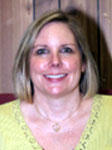
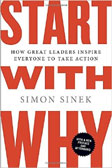 The
book
The
book 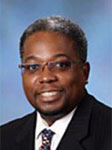 At
the
At
the 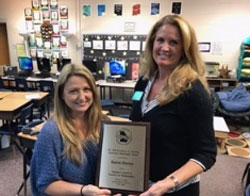
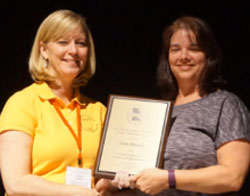
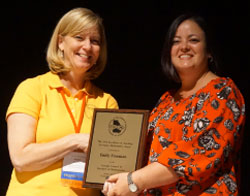
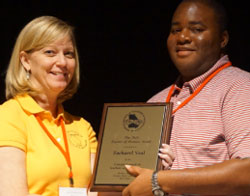
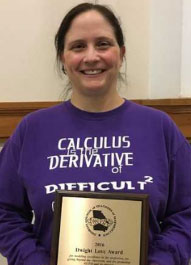
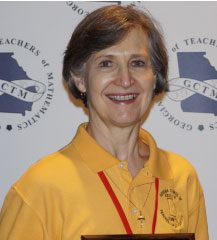
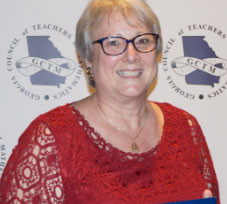
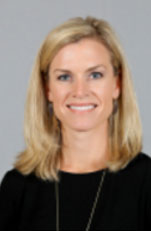
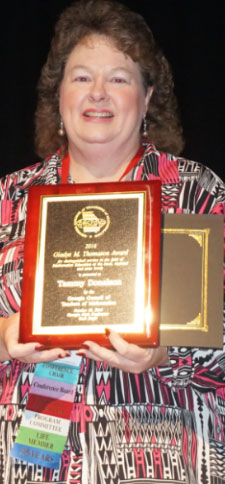
 Plans
are underway for the fourth annual Math Day at the Capitol. Senator
Chuck Hufstetler, a member of the Senate Education and Youth
Committee from Rome, GA, is sponsoring the resolution for Math Day.
The specific date for the resolution to be read is pending the
release of the legislative calendar.
Plans
are underway for the fourth annual Math Day at the Capitol. Senator
Chuck Hufstetler, a member of the Senate Education and Youth
Committee from Rome, GA, is sponsoring the resolution for Math Day.
The specific date for the resolution to be read is pending the
release of the legislative calendar. 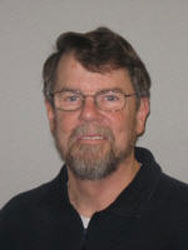 We’re
living in the Age of Accountability in education today. Political
leaders want teachers to be accountable for actually teaching their
students something. As a goal, there’s nothing wrong with that. The
problem comes when we try to define what should be taught, how it
should be taught, and how we can know if it’s been taught.
We’re
living in the Age of Accountability in education today. Political
leaders want teachers to be accountable for actually teaching their
students something. As a goal, there’s nothing wrong with that. The
problem comes when we try to define what should be taught, how it
should be taught, and how we can know if it’s been taught.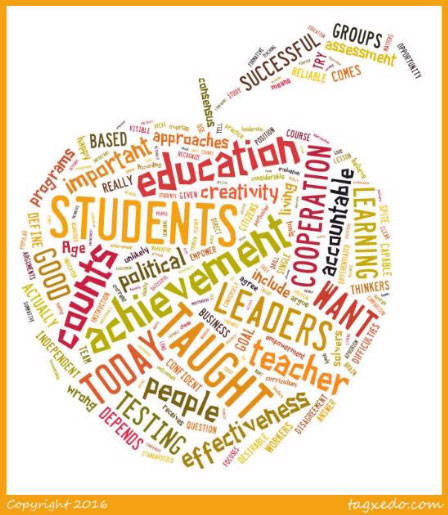 What
Should Be Taught
What
Should Be Taught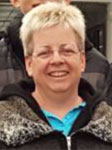 Three
years ago I realized that our math team had become stale and
complacent; it was obvious that we needed to do something different.
I met with our officers and my cosponsor and floated the idea of
competing at some different tournaments, in particular, the
Harvard-MIT Math Tournament (HMMT). Believe it or not, initially the
officers were less than thrilled with the idea. Making the
commitment to attend a tournament out of state was going to require
that we raise money, and they assumed that we would never be able to
earn enough to take a team to Boston. They assumed wrong.
Three
years ago I realized that our math team had become stale and
complacent; it was obvious that we needed to do something different.
I met with our officers and my cosponsor and floated the idea of
competing at some different tournaments, in particular, the
Harvard-MIT Math Tournament (HMMT). Believe it or not, initially the
officers were less than thrilled with the idea. Making the
commitment to attend a tournament out of state was going to require
that we raise money, and they assumed that we would never be able to
earn enough to take a team to Boston. They assumed wrong.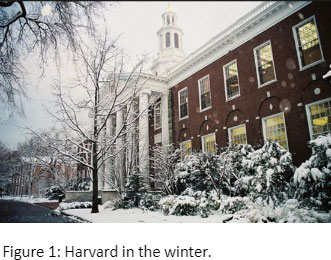 Second,
the tournament has four parts – two individual tests, a team test,
and the GUTS round. The individual tests are used to rank all 800
individual participants with the top 50 individuals named as Alphas.
The team events plus the individual scores of each team member are
used to calculate the team ranks of the 150 teams from around the
world that compete. The GUTS round is the most exciting with live
scoring and a leaderboard projected into the coaches’ room –talk
about a nail-biter!
Second,
the tournament has four parts – two individual tests, a team test,
and the GUTS round. The individual tests are used to rank all 800
individual participants with the top 50 individuals named as Alphas.
The team events plus the individual scores of each team member are
used to calculate the team ranks of the 150 teams from around the
world that compete. The GUTS round is the most exciting with live
scoring and a leaderboard projected into the coaches’ room –talk
about a nail-biter! Last,
we get to do some sightseeing! Last year we took the Harvard Tour
and went to the Museum of Art on Harvard’s campus. This year we went
to the MIT Museum of Science and Technology which was fascinating.
The campuses alternate each year, so this year the Friday events
were on MIT’s campus and the Saturday tournament was on Harvard’s
campus.
Last,
we get to do some sightseeing! Last year we took the Harvard Tour
and went to the Museum of Art on Harvard’s campus. This year we went
to the MIT Museum of Science and Technology which was fascinating.
The campuses alternate each year, so this year the Friday events
were on MIT’s campus and the Saturday tournament was on Harvard’s
campus.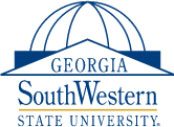


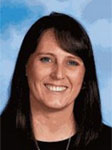 Integrating
technology into lessons is a common discussion in among educators.
Making these lessons student-centered is a challenge for many
teachers.
Integrating
technology into lessons is a common discussion in among educators.
Making these lessons student-centered is a challenge for many
teachers. 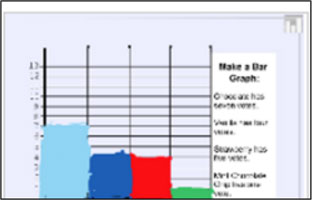
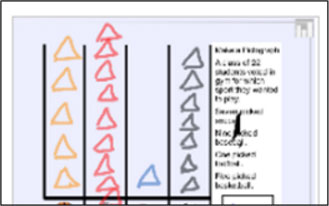
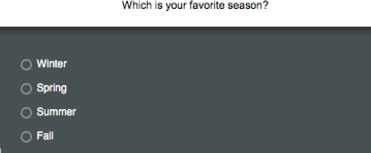

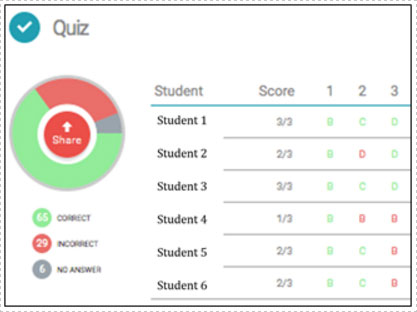
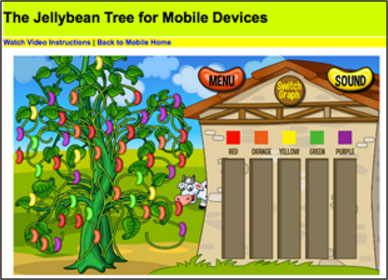
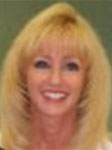 Abstract
Abstract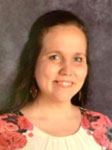
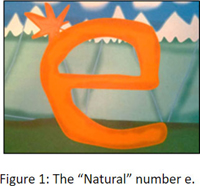 Our
administration encourages us to take risks in the classroom. We
should not be afraid of failure to the point where it holds us back
from trying new things. For me, this risk paid off. The students
were excited to compete in a contest to recite as many places of e
as possible. (Our winner remembered over 100 digits of e!) In an
effort to find out facts about Euler and e, the students became math
historians and this exploration exposed them to upper level
mathematics that they will see in future math classes.
Our
administration encourages us to take risks in the classroom. We
should not be afraid of failure to the point where it holds us back
from trying new things. For me, this risk paid off. The students
were excited to compete in a contest to recite as many places of e
as possible. (Our winner remembered over 100 digits of e!) In an
effort to find out facts about Euler and e, the students became math
historians and this exploration exposed them to upper level
mathematics that they will see in future math classes.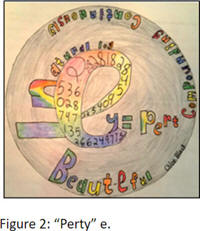 What
did I learn from this experience? Take more risks. Give students the
opportunity to throw a mathematical party and yet hold them
accountable for researching mathematics, creating something new, and
communicating what they’ve learned with their peers. Do I think they
will have a Geometry Milestone question about the history of e? No.
But, these students will remember that one day in Dr. Gammill’s math
class when they brought in e-themed food like or”e”os, dor”e”tos,
brown”e”s, cook”e”s, and cupcakes with e’s on them and shared their
own mathematical poetry, artwork, and facts about e. Their
enthusiasm was contagious. After my class, they will likely smile
recalling those memories, and recall some of the things they learned
about e the next time they are working with interest that compounds
continuously or finding the derivative of y = ex. It is rewarding
when the calendar, curriculum and cookies all come together to
excite our students about mathematics. Here are a few more student
samples to enjoy. Click the image for a larger view.
What
did I learn from this experience? Take more risks. Give students the
opportunity to throw a mathematical party and yet hold them
accountable for researching mathematics, creating something new, and
communicating what they’ve learned with their peers. Do I think they
will have a Geometry Milestone question about the history of e? No.
But, these students will remember that one day in Dr. Gammill’s math
class when they brought in e-themed food like or”e”os, dor”e”tos,
brown”e”s, cook”e”s, and cupcakes with e’s on them and shared their
own mathematical poetry, artwork, and facts about e. Their
enthusiasm was contagious. After my class, they will likely smile
recalling those memories, and recall some of the things they learned
about e the next time they are working with interest that compounds
continuously or finding the derivative of y = ex. It is rewarding
when the calendar, curriculum and cookies all come together to
excite our students about mathematics. Here are a few more student
samples to enjoy. Click the image for a larger view.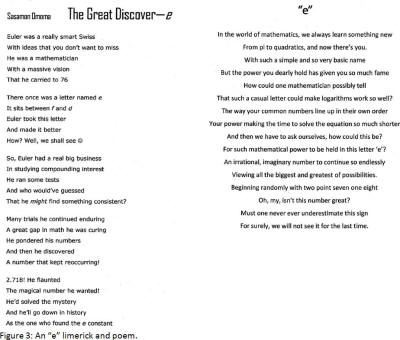
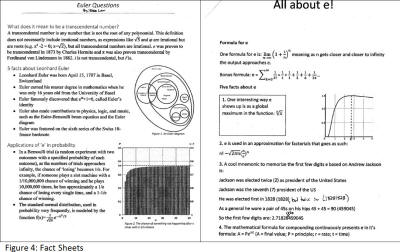
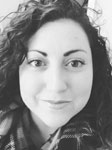 The purpose of the current study
was to determine the effect of after school tutoring interventions
on students’ academic performance in the area of mathematics. The
study involved 26 second-grade students over a period of 8 weeks.
While both groups received general classroom instruction, one group
received additional biweekly after-school math tutoring. Student
achievement was measured using a pre and posttest benchmark
assessment. The results indicated higher achievement data for
students who received the after school tutoring. Student attitudes
toward mathematics were measured using a survey. The survey results
showed no significant difference between student attitudes in the
two groups. Additionally, student engagement was measured with a
checklist. The checklist results also showed no significant
difference between student engagement in either group. Based on
these results, it can be concluded the after-school tutoring
improves second grade students’ academic achievement in math, but
does not affect attitudes toward mathematics or classroom
participation.
The purpose of the current study
was to determine the effect of after school tutoring interventions
on students’ academic performance in the area of mathematics. The
study involved 26 second-grade students over a period of 8 weeks.
While both groups received general classroom instruction, one group
received additional biweekly after-school math tutoring. Student
achievement was measured using a pre and posttest benchmark
assessment. The results indicated higher achievement data for
students who received the after school tutoring. Student attitudes
toward mathematics were measured using a survey. The survey results
showed no significant difference between student attitudes in the
two groups. Additionally, student engagement was measured with a
checklist. The checklist results also showed no significant
difference between student engagement in either group. Based on
these results, it can be concluded the after-school tutoring
improves second grade students’ academic achievement in math, but
does not affect attitudes toward mathematics or classroom
participation.